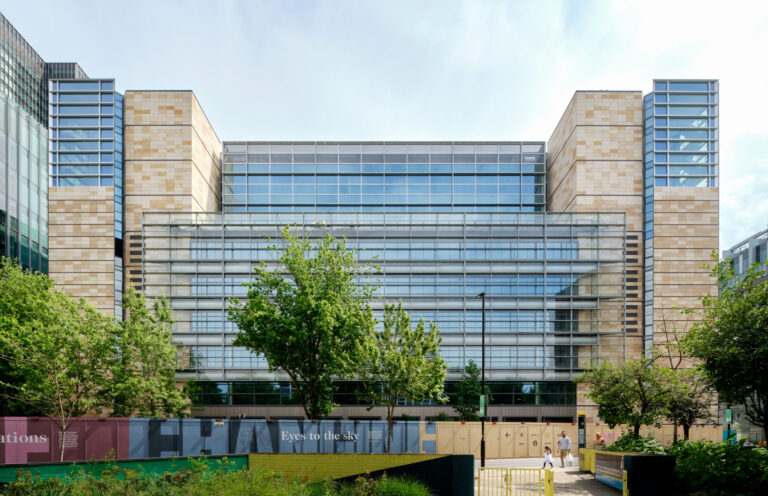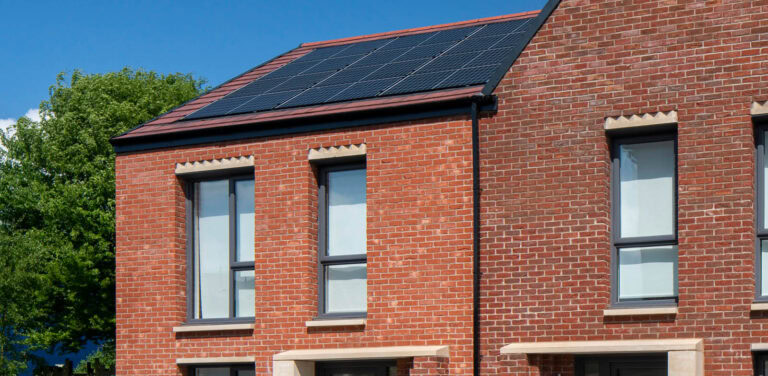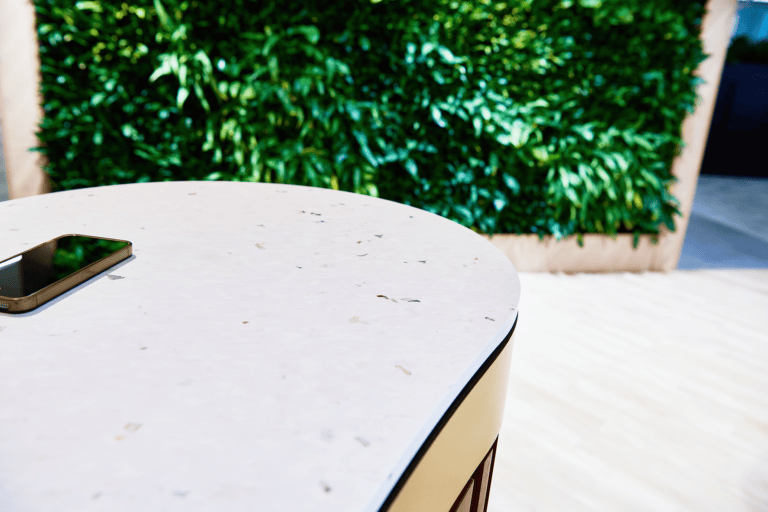Cambridge Avenue

Key Sustainability Objectives/ Outcomes
This project aimed to reuse as much of the building as possible whilst comparing the cost and carbon savings to a new build. The embodied carbon of the materials was considered at each stage of the project with reused materials supporting the 56% reduction in embodied carbon at practical completion compared to an equivalent new build.
The reuse of materials enabled a 25% cost saving in materials and products, however, due to the complexity of the project did not result in an overall cost saving compared with new build. The building was not designed in a purposeful manner to enable deconstruction, which could offer greater cost savings for re-using materials in the future.
Climate change:
- Embodied Carbon: 220kgco2/m2 up to practical completion (A1-5) covering main building elements; 56% lower embodied carbon at practical completion compared to typical new build warehouse specification – 700tco2e saved
- 6% lower WLC footprint compared to new build – 4,820 tco2e total – saving 330tco2e.
Resource Use:
This project reused much of the existing structure on the old site and rebuilt it on the new site. The warehouse has also been rebuilt so it can be deconstructed and has incorporated the use of recycled content in the concrete. This led to various carbon savings:
- The reuse of the steel structure saved 260 T Co2e (80kg Co2e/m2) and reuse of concrete ground beans and precast floor slabs saved 130t co2e (40kg co2e/m2) (1b)*.
- The reuse of pipes, flutes, pumps saved 30T co2e (10kgco2e/m2) (1b)*.
- Reusing the facade saved 30 T co2e (9kg co2e/m2) and reuse of roofing components saved 25T co2e (8kg co2e/m2) (1b)*.
- Reuse of internal fit out aspects saved 10 t co2e (3kg co2e/m2) and reuse of the lift saved a further 25t co2e (8kg co2e/m2) (1b)*.
- The new warehouse is deigned so it can be deconstructed if it needs to be moved in the future (2d)*.
- The use of GGBS in the concrete specification saved 200 T CO2e (63kgCO2e/m2) (5b)*.
Notable Approaches And Solutions
This was a test project to see if the warehouse could be deconstructed and re-built on a new site reusing as much of the original material as possible. The project team meetings involved the carbon consultants playing as important a role as the cost and programme teams, so carbon was a key factor in every decision. The warehouse was reconstructed in a way which means it can now be deconstructed again if needing to be moved sites.
Lessons Learnt
- SEGRO took on the risk for the reused components as it is their building.
- GGBS has a slower curing time, so this added to the programme length.
- The team struggled to reuse some elements of the building despite them being fit for use due to updated building regulations. For example, new stairs were required under new building regulations this meant some cost and carbon savings were not achieved as they could not reuse the previous stairs and new stairs cost around £20,000.
- There were similar problems with the reuse of the aircon plant (10–12-year design life) and boilers. The design life and change to building regulations meant they had to be replaced and could not be reused.
- Brickwork around the building was reused by being crushed but had the bricks initially been constructed with a lime mortar there would have been more opportunity for reuse.
- Reusing the lift was another challenge as the team had to get special dispensation from the government. Also, there was only one engineer who still had the knowledge on how to re-commission the lift despite it only being circa 10 years old. It was slightly cheaper to reuse the lift than get a new lift, around a £5000 saving.
- Having the client and the whole team buy in for reuse was important for making the project a success. Equally, having the carbon team around the table for the decision-making alongside the cost and programme team meant the carbon impact of decisions was always thought about throughout the project and helped enabled the carbon savings achieved.
Related members
Langley Hall Associates Ltd
Related
1 Triton Square

11-21 Canal Reach – Meta Office

Blackrock Street Housing, Manchester

JLL – Manchester office fit-out


